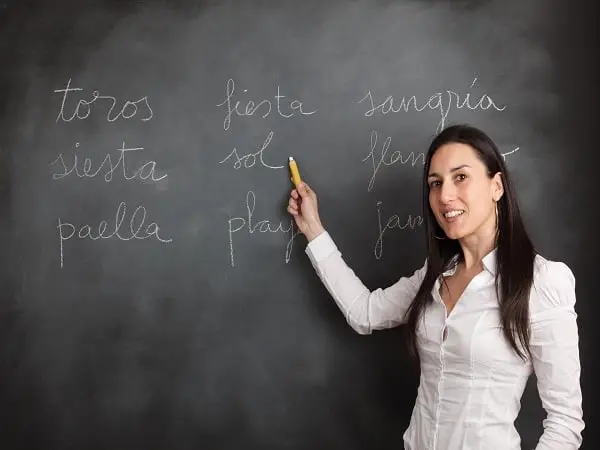Spanish is a language that is as beautiful as it is complex. Therefore, foreigners that learn Spanish encounter some difficulties, especially the grammar. One of the basic problems is to differentiate the use of ser and estar as it is genuine Spanish and no equivalents are found in other languages.
It is simple for an Englishman, Frenchman or an Italian to learn Spanish, as far as vocabulary and phonetics are concerned. However, the grammar is not so simple as Spanish is a complex language.
One example is the differences between the verbs ser and estar that bring foreigners to mind when learning Spanish. The fact is that the English do not make any type of difference, they only use ser. Italians know a difference, but they only have five uses of the verb estar, which is why they also find it difficult.
When a foreigner says “soy enfermo” and not “estoy enfermo” we find it funny because we are not contemplating the effort that it takes to be able to differentiate both concepts.
![]()
There are some easy keys that exist to differentiate between ser and estar when learning Spanish:
1. El verbo estar
Is used for temporary or conjunctural characteristics (including health status). Here would be the example of ‘Estoy enfermo’ (i’m ill).
2. Indicate that a building is located
When learning Spanish it is difficult to locate the streets, buildings and people. This is the other use of the verb estar which is important when asking for streets, shops etc.
3. The passive voice of state
For example: la mesa está puesta (the table is set)
4. The verb ser
On the other hand the verb ser is used for permanent characteristics. Soy alto (i’m tall), for example, is a basic phrase reflects this rule when learning Spanish.
5. Indicate the price of something
This is a simple use of the verb ser for foreigners because it is the same as other languages and also they frequently use it
6. Indicate a recipient with the preposition para
This is more complicated to use. Foreigners that learn Spanish confuse the propositions por and para, so this rule is basic. ‘Es para Daniel’ (It’s for Daniel), would be an example.
7. Indicate the material of an object
Es de oro (its gold), es de plata (its silver), for example. The constructions in other languages are completely different, which is why it is difficult for a foreigner a lot to learn this rule.
8. Hours, dates and seasons of the year
Es primavera (it’s spring), es domingo (it’s sunday), etc.
Practicing the uses of ser and estar so much in written exercises like oral is very important when learning Spanish. This allows you to see the difference and gives you agility of mind to respond.






